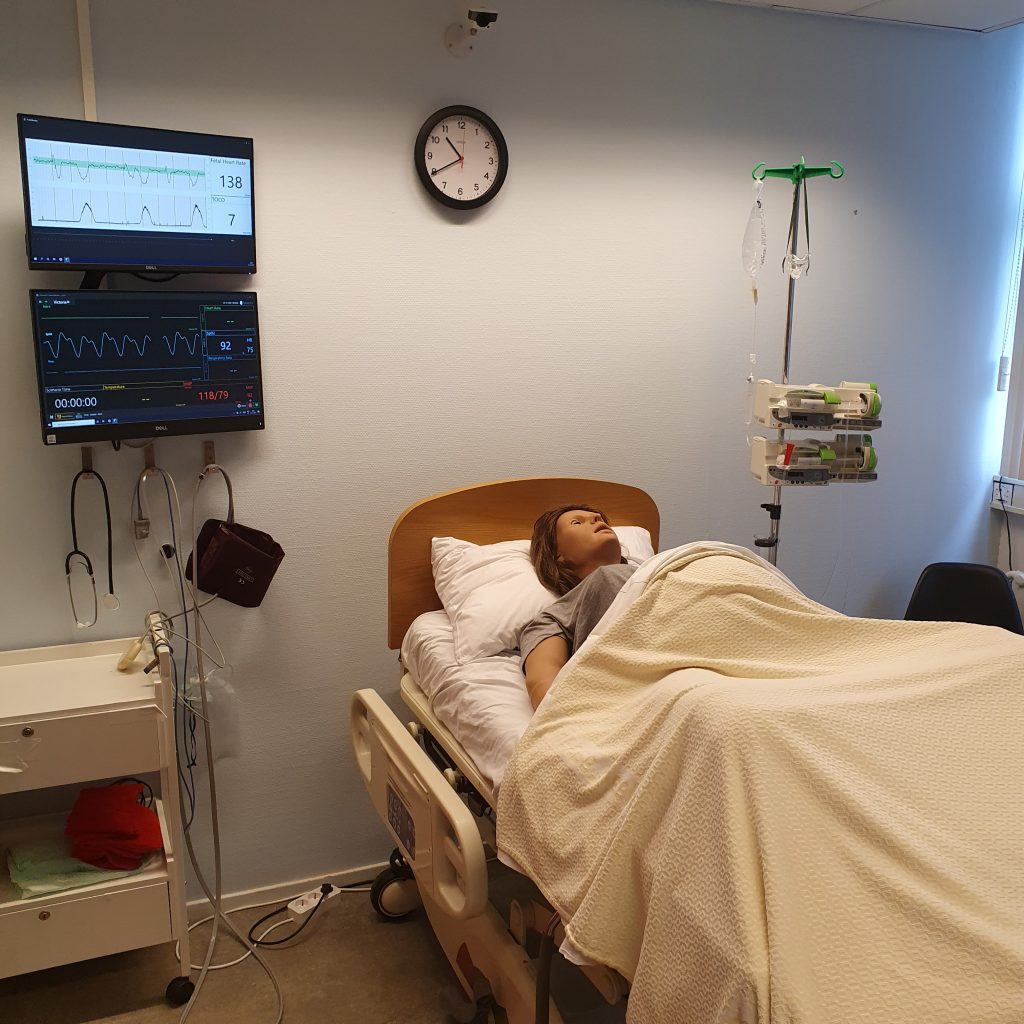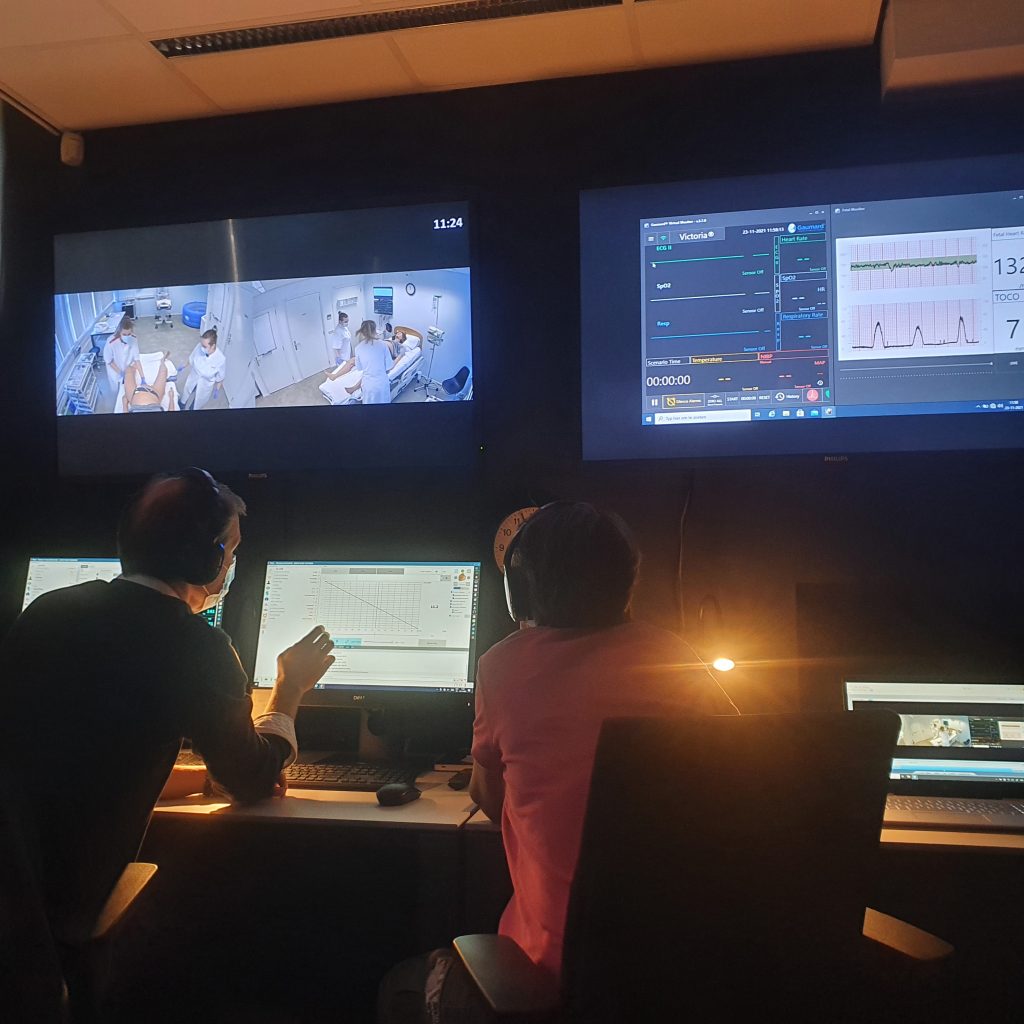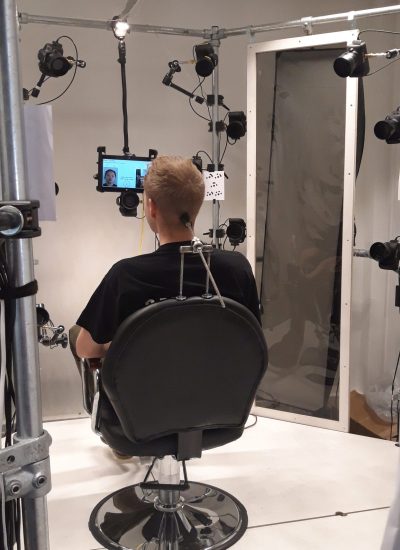STORY
There is no doubt about the importance of high-quality medical training for obstetricians. For this, medical education employs childbirth simulators such as the S2200 Victoria Childbirth Simulator. There students and staff are confronted with medical emergencies that can occur during labour. The patient simulators that are currently being used are unable to portray facial expressions, facial discolorations, perspiration levels, or interact with the students. These symptoms, however, are important cues that should be picked up during childbirth. For this reason, VIBE collaborated with the Máxima MC hospital, to create an interactive digital embodiment for the patient that covers the gaps of the current patient manikins.
PROCESS
For the training of medical staff childbirth simulators are used. These training sessions involve the patient manikin, a human-sized doll capable of replicating the different stages of childbirth as well as different scenarios. Additionally, the doll has many functionalities that can be monitored by the students and interactively changed by the educators. These trainers are in a different room during the simulation and control the vitals and the course of the training. This method is called the Wizard of Oz method and allows the training staff to communicate with the students as well as control the simulation.
The addition of VIBE to current training is the incorporation of an interactive face to the patient manikin. This face is displayed by a monitor and placed over the head of the doll. The new face, that of the digital patient, adds a multitude of functionalities and possibilities to the training scenario. The embodiment allows the staff to role-play as the patient and give indications of the state of the mother during the delivery with respect to the WoZ method. In addition to that, the trainers can control the symptoms displayed by the mother and cycle through a predefined set of behaviours. These can vary from disorientation to utterances of pain, fainting, and more. The inclusion of these functions allows for a more accurate portrayal of different complex delivery situations such as Post-Partum Hemorrhaging. This allows the students to train in a more realistic environment and focus on the early detection of a multitude of symptoms related to the skin and behavioral symptoms. This more immersive training offers a high-fidelity portrayal of a diverse range of scenarios with respect to patient safety.
METHOD
To accuratly portray the different scenarios mentioned above the digital patient needed to have graphical realism as well as accurate behavioral patterns. To achieve this, the digital human was made with the help of a custom-built photogrammetry rig in order to capture the highest amount of detail regarding the skin and expressions. With the help of a professional actress the different facial expressions and behaviours were captured and translated by the animators in an iterative process in close collaboration with the medical staff.
Once created the animations and skin regulation parameters were integrated in the VIBE software. The application was expanded by adding a custom UI to allow the trainers to easily cycle through different scenarios.
Currently, our partners at the Máxima MC hospital are doing trial runs with students to test the new system and give indications for future modifications.




